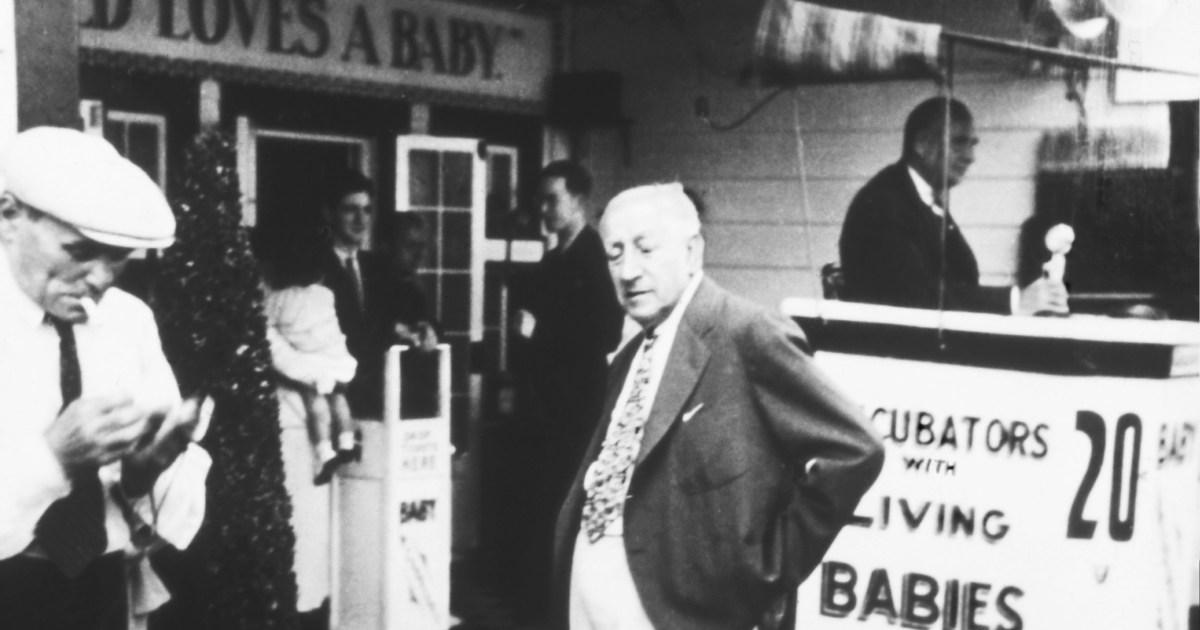World
How Dr. Martin Couney’s Circus Saved Thousands of Premature Babies

In the early twentieth century, thousands of premature infants fought for survival in an unusual setting—a carnival. Known as the “Incubator Doctor,” Dr. Martin Couney transformed the lives of these vulnerable babies, showing them to the public in a bid to save them. His unconventional methods, which included charging admission to view the infants, drew both admiration and significant controversy.
Dr. Couney’s journey began with a personal experience. After having a premature baby with his wife, a nurse, he recognized the urgent need for specialized care. Hospitals at the time were ill-equipped to handle such delicate cases, and many infants were deemed too weak to survive. In response, he created a “child hatchery,” a precursor to modern neonatal units, filled with incubators that kept fragile babies alive.
Instead of operating within traditional medical facilities, Dr. Couney set up his incubator exhibits at fairs and expositions across the globe. He showcased infants in large glass containers, allowing the public to witness the struggles for life. His first notable exhibition occurred at the 1897 London exhibition, followed by a successful display at the Nebraska State Fair in 1888.
While the displays drew massive crowds, they also sparked outrage. Critics, including the New York Society for the Prevention of Cruelty to Children, accused him of exploiting the vulnerable. An editorial in the respected medical journal The Lancet condemned the exhibitions, equating them to “catch-penny monstrosities.” Despite these criticisms, Dr. Couney maintained that his work was saving lives.
Dr. Couney’s methods were effective. At the time, hospitals faced a mortality rate of up to 90% for premature infants. In contrast, those cared for in Couney’s incubators had a remarkable survival rate of between 85% and 90%. This success allowed families to receive care at no cost, as Dr. Couney funded his operations through admission fees.
During the 1933-1934 Chicago World’s Fair, his exhibit attracted over 1.25 million visitors. The spectacle captivated the public, and many patrons returned repeatedly to check on their favorite infants. One woman was noted to have visited weekly for thirty-six seasons.
Behind the scenes, Dr. Couney’s model operated on a strict regimen of care. He employed nurses and wet nurses, often including the mothers of the babies, to provide nutrition and warmth. His dedication extended to maintaining high hygiene standards within the incubator rooms. Unlike many hospitals of the era, which often led to blindness in treated infants, those in Couney’s care retained their sight—an achievement later linked to the overuse of oxygen in hospital settings.
Despite the apparent success, Dr. Couney’s legacy remains complex. While he undeniably saved the lives of an estimated 6,500 to 7,000 infants, his methods and motivations have drawn scrutiny. Author Dawn Raffel, who wrote *The Strange Case of Dr. Couney*, found inconsistencies in his claims of medical training and professional credentials. There is no evidence he attended medical school in Europe, nor is there a record of a US medical license.
Raffel points out that during a time dominated by the eugenics movement, many considered weak infants unworthy of survival. Dr. Couney’s work was both revolutionary and contentious, illustrating a broader struggle for the recognition of neonatal care.
Ultimately, Dr. Couney’s contributions paved the way for modern neonatology. His innovative approach influenced many, including Dr. Julius Hess, a pediatrician who later championed the importance of incubators in hospitals.
The question of whether Dr. Couney was an exploitative showman or an inspirational visionary lingers, but the voices of those he saved provide clarity. Many of the infants who survived have recounted their experiences, expressing pride in their unconventional beginnings. “It can make you uneasy to think about,” Raffel observes, “but most of all, they felt they survived because of this man.”
Dr. Martin Couney may have operated at the intersection of medicine and spectacle, but his legacy undeniably includes the countless lives he saved—an enduring testament to the power of innovation in the face of adversity.
-

 Health3 months ago
Health3 months agoNeurologist Warns Excessive Use of Supplements Can Harm Brain
-

 Health3 months ago
Health3 months agoFiona Phillips’ Husband Shares Heartfelt Update on Her Alzheimer’s Journey
-

 Science2 months ago
Science2 months agoBrian Cox Addresses Claims of Alien Probe in 3I/ATLAS Discovery
-

 Science2 months ago
Science2 months agoNASA Investigates Unusual Comet 3I/ATLAS; New Findings Emerge
-

 Science1 month ago
Science1 month agoScientists Examine 3I/ATLAS: Alien Artifact or Cosmic Oddity?
-

 Entertainment5 months ago
Entertainment5 months agoKerry Katona Discusses Future Baby Plans and Brian McFadden’s Wedding
-

 Science1 month ago
Science1 month agoNASA Investigates Speedy Object 3I/ATLAS, Sparking Speculation
-

 Entertainment2 months ago
Entertainment2 months agoLewis Cope Addresses Accusations of Dance Training Advantage
-

 Entertainment4 months ago
Entertainment4 months agoEmmerdale Faces Tension as Dylan and April’s Lives Hang in the Balance
-

 World3 months ago
World3 months agoCole Palmer’s Cryptic Message to Kobbie Mainoo Following Loan Talks
-

 Science1 month ago
Science1 month agoNASA Scientists Explore Origins of 3I/ATLAS, a Fast-Moving Visitor
-

 Entertainment4 months ago
Entertainment4 months agoMajor Cast Changes at Coronation Street: Exits and Returns in 2025









